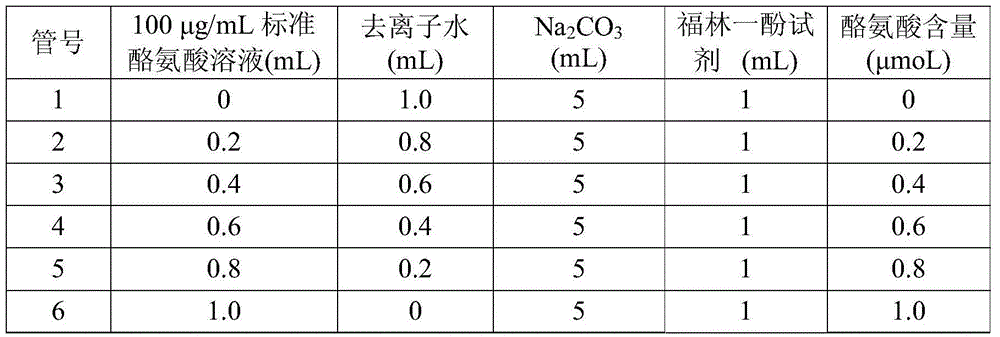Bacillus thuringiensis strain for efficient degradation of fly larvae protein
A technology for degrading fly maggot protein and Bacillus aureus, applied in the direction of bacteria, microorganism-based methods, microorganisms, etc., can solve the problems of low nutrition utilization of fly maggot protein, achieve the effect of increasing content, broad development prospects, and improving nutritional value
- Summary
- Abstract
- Description
- Claims
- Application Information
AI Technical Summary
Problems solved by technology
Method used
Image
Examples
Embodiment 1
[0014] Embodiment 1 efficient bacterial strain is isolated
[0015] Take 1 gram of fly maggot repellent samples that died in the natural environment, add 100mL sterile saline, shake for 10 minutes, let stand for 5 minutes, spread the supernatant on the screening plate medium after 10-fold dilution, and grow at 37°C; The composition of the screening medium for fly maggot protein degrading strains is: 2.0g fly maggot protein powder, 0.5g sodium chloride, 2.0g agar powder, 100mL water, pH value 7.0, sterilized at 121°C for 30min.
[0016] The preparation method of culture medium of the present invention is as follows:
[0017] Accurately weigh 2.0g of fly maggot protein powder, add 100mL of water, heat to dissolve the protein, add 0.5g of sodium chloride, 2.0g of agar powder, adjust the pH value, and sterilize at 121°C for 30min.
[0018] The specific implementation of the screening of fly maggot protein degrading strains is as follows:
[0019] 1. Preliminary screening: After ...
Embodiment 2
[0038] The specific enzymatic property research of embodiment 2 fly maggot protein degrading enzyme is as follows:
[0039] The source of the enzyme: the fly maggot protein degrading strain was inoculated in the basic fermentation medium (3.0% bran, 1.0% peptone, 0.5% NaCl, natural pH, sterilized at 121°C for 30min), and cultivated at 36°C with a rotation speed of 180r / min for 48 hours, the culture solution was centrifuged at 4000r / min for 10min, and the supernatant was the fly maggot protein degradation enzyme solution.
[0040] (1) The optimum temperature of the enzyme: measure the activity of the degrading enzyme at different temperatures (35, 40, 45, 50, 55, 60°C), and the temperature at which the enzyme activity is the highest is the optimum temperature of the enzyme
[0041] (2) Stability of the enzyme to temperature: The degrading enzyme is incubated at different temperatures (35, 40, 45, 50, 55, 60°C) for 1 hour, and then the activity of the enzyme is measured, so as t...
Embodiment 3
[0046] Embodiment 3 fly maggot protein biodegradation effect:
[0047] Medium formula: glucose 2.0g, fly maggot protein 2.0g, NaCl 0.5g; water 100mL;
[0048] 1) Weigh each component according to the composition of the medium, and dissolve it with tap water;
[0049] 2) Put the prepared medium into the Erlenmeyer flask, stir and mix, sterilize at 121°C for 30 minutes, and cool;
[0050] 3) Inoculate the fly maggot protein-degrading bacteria and cultivate for 48 hours;
[0051] 4) Measure the amount of amino acid produced in the supernatant after the culture medium is 4000r / min, so as to determine its degradation degree.
PUM
 Login to View More
Login to View More Abstract
Description
Claims
Application Information
 Login to View More
Login to View More - R&D Engineer
- R&D Manager
- IP Professional
- Industry Leading Data Capabilities
- Powerful AI technology
- Patent DNA Extraction
Browse by: Latest US Patents, China's latest patents, Technical Efficacy Thesaurus, Application Domain, Technology Topic, Popular Technical Reports.
© 2024 PatSnap. All rights reserved.Legal|Privacy policy|Modern Slavery Act Transparency Statement|Sitemap|About US| Contact US: help@patsnap.com








